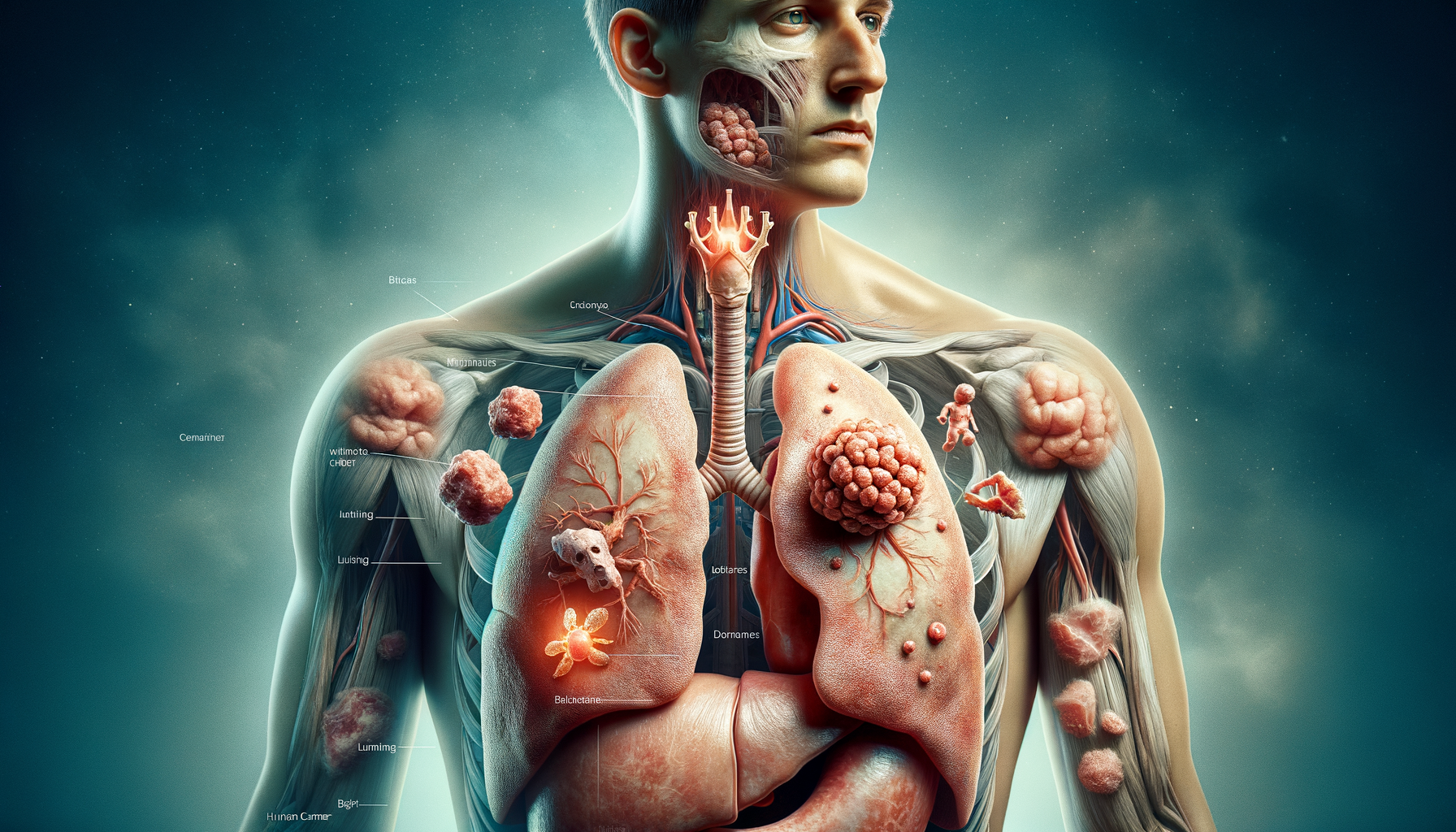Understanding Lung Cancer Symptoms
Lung cancer is a significant health concern worldwide, affecting millions of individuals each year. Recognizing the symptoms early can be crucial for effective treatment and management. Common symptoms include persistent coughing, changes in voice, and shortness of breath. These symptoms can often be mistaken for other respiratory conditions such as asthma or bronchitis, which can delay diagnosis. It’s essential to be vigilant about these signs, particularly if they persist over time.
Other symptoms may include unexplained weight loss and fatigue. These are often overlooked as they can be attributed to stress or lifestyle changes. However, when combined with respiratory issues, they could indicate something more serious. Additionally, chest pain that worsens with deep breathing or coughing should not be ignored. This pain might be a sign of the cancer spreading to the chest wall or the lining around the lungs.
In some cases, individuals may experience recurring infections such as bronchitis or pneumonia. This recurrence can be a red flag, especially if it doesn’t respond well to standard treatments. Understanding these symptoms and seeking medical advice when they occur can significantly impact the outcomes for those affected by lung cancer.
Early Warning Signs of Lung Cancer
Early detection of lung cancer can greatly improve survival rates, making it vital to recognize the early warning signs. One such sign is a persistent cough that doesn’t go away. While a cough is common with colds and allergies, a cough that lingers for weeks should be evaluated by a healthcare professional.
Another early warning sign is coughing up blood, even in small amounts. This symptom can be alarming and warrants immediate medical attention. Additionally, wheezing or a whistling sound when breathing can indicate a blockage or inflammation in the lungs, potentially caused by a tumor.
Changes in breathing patterns, such as shortness of breath during routine activities, can also be an early indicator. This change might be gradual, making it easy to dismiss. However, if you notice that you are becoming breathless more easily, it’s crucial to consult a doctor. Early intervention can lead to more treatment options and better outcomes.
Methods for Lung Cancer Detection
Detecting lung cancer at an early stage is critical for effective treatment. Several methods are employed to diagnose lung cancer, starting with imaging tests. A chest X-ray is often the first step, as it can reveal abnormal masses or nodules in the lungs. If anything suspicious is found, a CT scan may be recommended for a more detailed view.
In addition to imaging, sputum cytology can be used if a patient has a persistent cough. This test involves examining the mucus (sputum) from the lungs under a microscope to look for cancer cells. Another diagnostic tool is a biopsy, where a small sample of lung tissue is removed and analyzed for cancer cells. This can be done through various techniques such as bronchoscopy, needle biopsy, or surgical biopsy.
Newer methods include molecular testing, which can identify specific genetic mutations in cancer cells. This information can guide targeted therapies, providing more personalized treatment options. Early and accurate detection of lung cancer can lead to better management and improved survival rates.
Risk Factors and Prevention
Understanding the risk factors for lung cancer can help in its prevention. Smoking remains the leading cause, accounting for the majority of cases. The risk increases with the number of cigarettes smoked and the duration of smoking. However, non-smokers can also develop lung cancer, often due to exposure to secondhand smoke, radon gas, or other environmental toxins.
Occupational exposure to asbestos and other carcinogens can also increase the risk. Additionally, a family history of lung cancer may suggest a genetic predisposition. It’s important to be aware of these factors and take preventive measures where possible.
Quitting smoking is the most effective way to reduce the risk. Avoiding exposure to known carcinogens and maintaining a healthy lifestyle with a balanced diet and regular exercise can also contribute to prevention. Regular health check-ups and screenings for those at high risk can aid in early detection and treatment.
Conclusion: Taking Action for Lung Health
Lung cancer remains a challenging diagnosis, but awareness and early detection can make a significant difference. By understanding the symptoms, recognizing early warning signs, and utilizing available detection methods, individuals can take proactive steps towards better lung health. It’s important to consult healthcare professionals if any concerning symptoms arise and to engage in preventive measures to reduce risk.
Educating oneself and others about lung cancer can empower individuals to make informed decisions about their health. Through vigilance and timely medical intervention, the impact of lung cancer can be mitigated, leading to improved outcomes and quality of life for those affected.




Leave a Reply